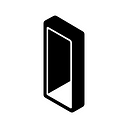Start living your life in the Ether with TokenCard: A 8-step guide
Ethereum carries the promise of a bright new future for us. One where people have complete independence, choice, and control of their assets. One where you can live in the Ether. But what does it mean, for you, for everyone?
This vision is well on its path to actualisation. The rise of decentralised exchanges and other financial services (DeFi) is offering more and more ways to spend, borrow, lend and move assets around in a decentralized and non-custodial fashion. The development of DeFi is a unique opportunity to usher a new era in finance, where the focus on profitability and returns is swapped for an obsession of empowerment: giving people back full control over their assets is a game-changer.
Here at TokenCard, we’re doing our part and addressing one critical element of the DeFi ecosystem: spending your assets in the real world, the way you’re used to. We’re now providing the world first non-custodial debit card, available in the UK and the 31 countries of the EEA.
That’s not it, here’s the good news: the whole process is easy and you’re already only 8 steps away from financial sovereignty and autonomy. Ready to live your life on Ethereum?
Step 1— Installing the TokenCard App
The TokenCard app is now live on the App Store! Download it to start setting up your wallet and order your card:
Responsibility is the price of freedom
Step 2— Secure Your Wallet
Once you have the app, there are a few more steps required to ensure the safety of your funds before you can deploy your Contract Wallet.
- The PIN is the main authentication method you use daily. It will be required when you open the app or initiate an action such as a card top-up.
- Write down your seed and store it somewhere safe (more on this below); you won’t need it for your day-to-day usage of the app.
⚠️ Depending on your device model, you might be using either FaceID, your fingerprints or a PIN code to authenticate. Your TokenCard PIN code is completely unrelated to your device PIN. However, you will need device-level authentication to validate transactions.
⚠️SECURING YOUR SEED IS CRITICAL⚠️
TokenCard is a non-custodial wallet, if you lose access to your seed, there is nothing we can do for you: responsibility is the price of freedom.
Here are some recommendations/best practices to secure your seed:
- Risk minimization: Always use an offline support to write it down: a piece of paper can’t be hacked!
- Contextless: Never write anything else than your seed on the paper where it’s written. Even if someone finds it, he won’t have the context to know what to do with it.
- Redundancy: Make sure your seed is written down on at least two pieces of paper, secured in two different locations.
- Inheritance: Your wallet, if properly secured, is eternal; you’re not. If you are storing a significant amount of money in there, consider putting someone else you trust in the loop so they can recover the funds if anything was to happen to you.
- Going further: You can encode your seed so that even if someone finds the paper he won’t be able to access the funds. Make sure you remember the encryption technique you used.
Step 3— Deploy Your Contract Wallet
Next up, deploy your Contract Wallet. The Contract Wallet governs your whole relationship with TokenCard — one where nobody but you can control your money. It stores your funds while also gives you ways to secure your assets even further. You can setup Spending Limits to restrain the value of assets that can be sent from your wallet. The limits can then be bypassed by defining Whitelisted Addresses to preserve functionality.
Now here’s the coolest part: with just one tap, you will deploy your own instance of the Smart Contract Wallet. Nobody else but you has access or control over it.
Verification steps
Welcome into the Ether! You now have a top-notch, secure Contract Wallet at your fingertips. When it comes to shipping cards, we also need to fulfil our regulatory requirements. This is where KYC comes in.
To get started, click the Card (‘💳’) tab.
Step 4— Verify Your Identity (KYC)
To order a card, we must verify your identity. Our KYC procedure is standard: you’ll need an official document (government ID, passport or driver’s license) and you will have to take a selfie.
By providing this information, we will be using third parties to perform checks on your identity, such as validating your address. Basically, confirming you are who you are.
In addition to validating your identity, we also run checks on your source of funds. Using other third parties we can validate that the crypto you are moving into the wallet is clean as we do not want this product offering to be used for money laundering.
Step 5— Verify Your Address and Order the TokenCard Card
It is possible that as part of the checks we need further information to prove you live at the address specified. This should not concern you, our compliance team may reach out to you and ask for a proof of address document.
Make sure you have one the following documents at your disposal, including your name and address on it (it must be <= 3 months):
- Utility bill: internet, electricity, gas… The only one we can’t accept is a mobile phone service bill.
- Government/Tax-related: your tax report, or any official government document figuring your name and address will do.
While ordering your card, you can decide the base currency it will be using: GDP(£) or EUR (€). The base currency has an impact on the fee structure, so make sure you pick wisely.
Activating and spending with TokenCard
Step 6— Activate Your Card
Fast forward a few days (we’re living the life on Ethereum, but your postal service isn’t… yet): your card has arrived! Take a moment to let it sink in, then share the good news on your networks (remember to hide your PAN, just for safety).
You won’t be able to use your card until you’ve activated it in the TokenCard App. Head back to the Card (‘💳’) section, and type in the last 4 digits of your card’s PAN to activate.
Step 7— Your First Top-up
Adding funds in your wallet
If you haven’t sent funds to your wallet yet, now is a good time! Tap “Receive” to display your Contract Wallet address and QR code — fill your boots with ETH, TKN, or DAI.
You need some ETH to top-up your gas tank. The TokenCard app will only support the three following tokens: ETH, TKN and DAI. More ERC-20 tokens are coming soon!
Topping up your gas tank
Once you have some ETH in your contract wallet, don’t forget to top up your gas tank. You will need gas to top up your card, as all transactions in the TokenCard app happen on-chain.
Topping up your debit card
With some funds in your wallet and gas in your tank, you can now top-up — sell some cryptocurrencies for fiat — so that you’re ready to spend:
ℹ️ Top-ups involve on-chain transactions requiring 3 confirmations. At the current state of the Ethereum network, it means the top-up transaction takes up to 90s to be visible in the app.
Step 8— Spending With Your TokenCard
Your card supports any payment system you’re used to. Your first purchase must be Chip and PIN, but after that, it’s however you like to spend — in-store, online, Contactless, ATM. If you’re left wondering what your PIN is, here’s how to find it:
⚠️ TokenCard is still in an early testing phase. If you encounter any bugs or find your experience confusing, feel free to initiate a report. It’s easy, simply shake your phone to get started.
Congratulations! You’re now part of the avant-garde (pardon my French) of Ethereum — the #TokenCard1K. Want to chat about your life in the Ether with other pioneers? Join the community discussion on Discord!
…Or maybe you were reading this piece simply to learn about the process? No hard feelings! Now is the time to sign-up to TokenCard to enjoy the world first non-custodial debit card: spend your cryptos, with some class.
- 🕸 Website | 🐦 Twitter | 🎮 Discord | 👽 Reddit |✈️Telegram -

